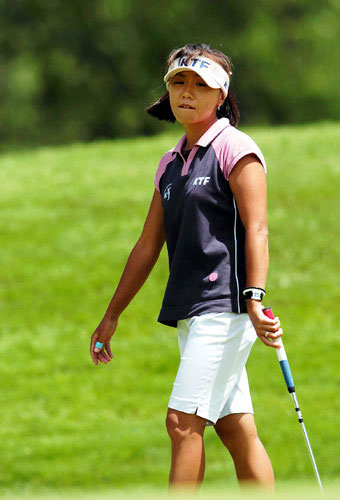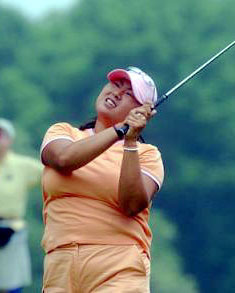 |
 |
 |
 |
 |
 |
Editorial: Slow Play Rule
The LPGA has introduced a new rule in the last two weeks to help combat the scourge of 'slow play' on tour. Simply put, the rule is meant to encourage players to pick up the pace on their rounds, to help make their play more fun both for the spectators and the other players. It used to be that you had 30 seconds to take each shot (unless a ruling or some other special circumstance arose). In addition, you were given a 25 second grace period per hole. The thirty second per shot time still exists, but the grace period under the new guidelines has been reduced to 10 seconds.
So, if you take three shots on a hole, you have 30 seconds * 3 + 10 = 100 seconds to complete all the shots on the hole.
As in the old days, the slow play regulations don't kick in unless your group drops more than a hole behind the group in front of it. Then, the group is 'put on the clock' by the officials. At that point, you are liable for punishment if you fail to meet the timing limit you are allotted on each hole.
It is in the punishment that the regulation really has gained strength. The first offense results in a two shot penalty assessed at the end of the current hole. The second penalty in the same round results in disqualification. In addition, there are added monetary penalties for multiple offenses throughout the year and, presumably, a good spanking from Ty Votaw if you continue to break the rules beyond that.

Mi Hyun Kim is never in much of a hurry
That could change, however!

Young-A Yang was the Korean player who
received a slow play penalty last week
The results have been striking, both in a good and a bad direction. The good is that play time has noticeably improved in the last two weeks. It was particularly evident at the Sybase Classic, where the average round time was reduced by close to 40 minutes from the previous year. Grace Park, whose group was briefly put on the clock in one of the rounds, nonetheless had mostly positive things to say about the change. "The last time I played it was over five hours, the past two days it was under 4 1/2. So definitely, definitely it needed to be done, oh yeah. I think we're all happy about it", she said.
But there was an ugly side to this change, and it surfaced during the final round of the Sybase. There, three players in the final three groups were assessed two stroke penalties for slow play. This could potentially have seriously affected the outcome of the event, and it did certainly put a dent in the pocketbooks of those players. The question is, was it fair? And was it appropriate to assess those penalties at that time?